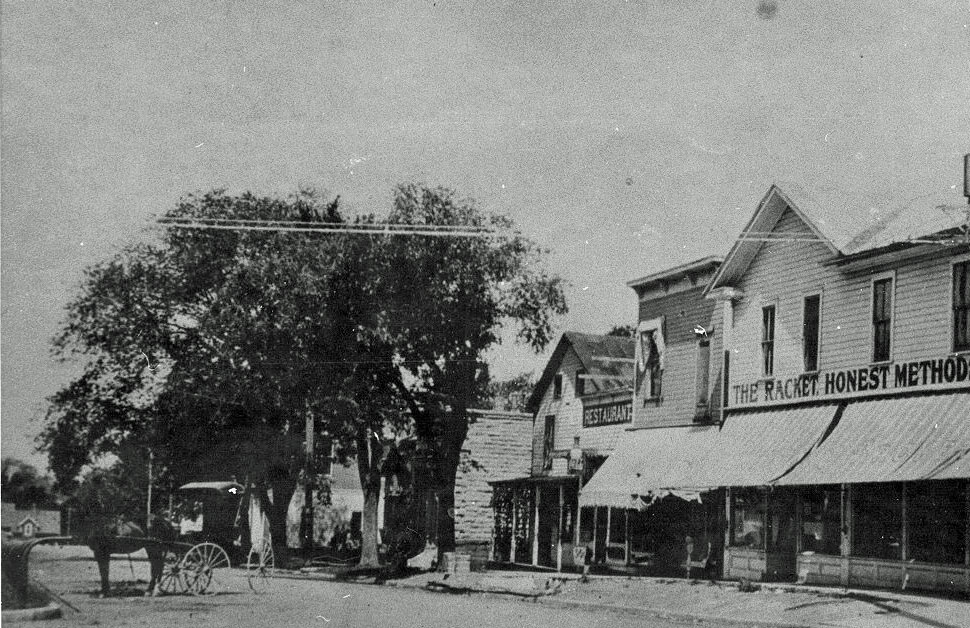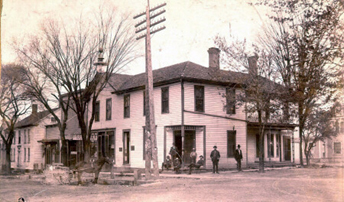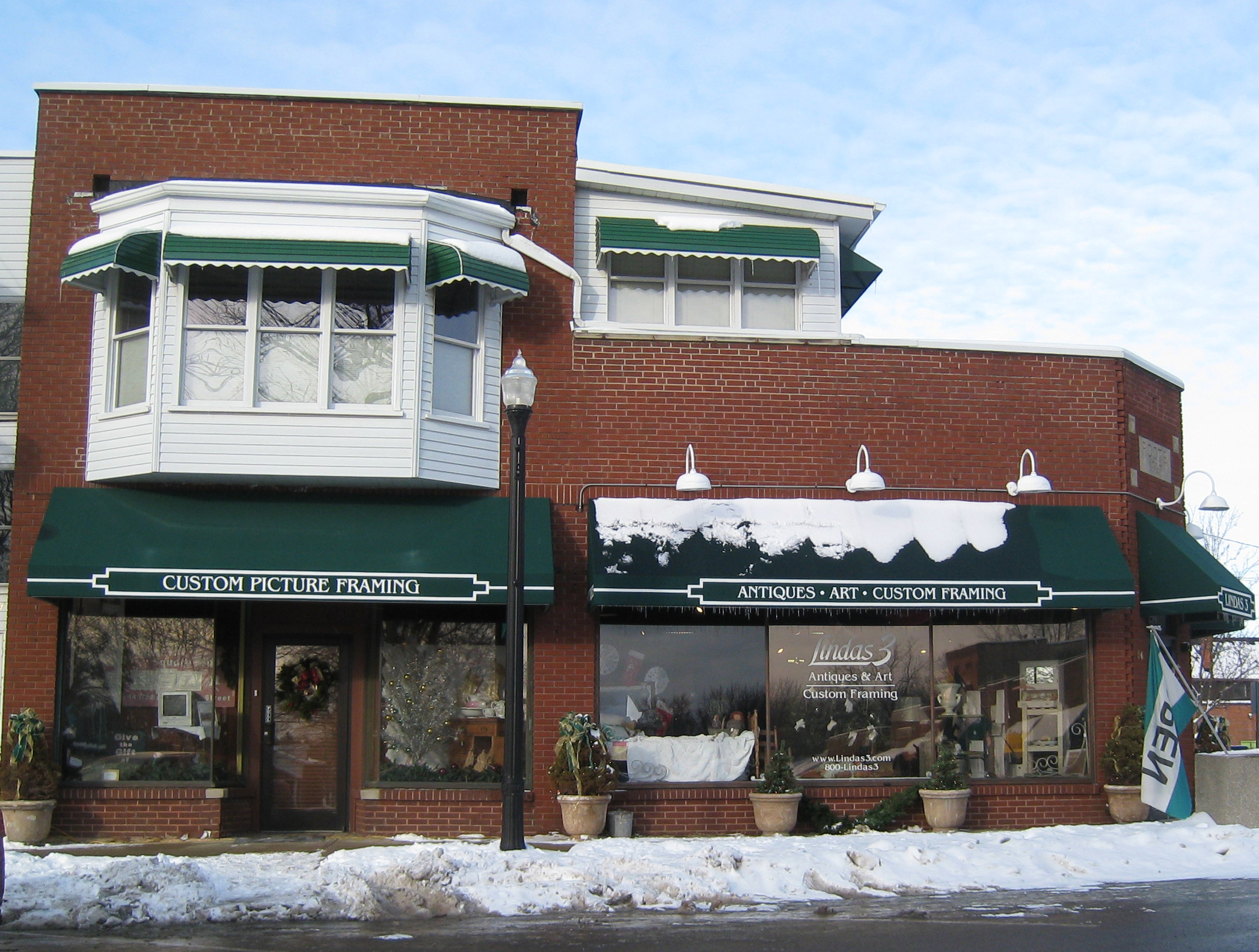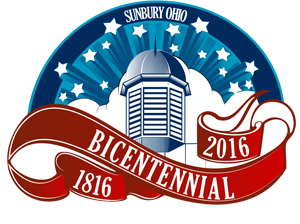| From The Sunbury News, December 22, 2016: |
|
||||||
| Because You Asked . . . . | |||||||
|
Remembering Sunbury 1912-1918 |
|||||||
|
By Polly Horn, Curator of the Myers Inn Museum |
|||||||
|
In the winter of 1976 as Community Library historian, I thought we
should publish a booklet for the National Bicentennial. Although
Ruth Truxall never agreed to do the book, she and Esther McCormick
began asking people to turn in their family histories which we
collected at the library. By the 4th of July we had only collected
a dozen stories but the people continued to send in their’s.
Thirteen women volunteered to type the manuscripts which were
collected into 2 volumes for the library. Ruth Truxall died before
we had collected over 200 family stories. Carleton and Dilly Burrer
spent many months indexing the book on 3x5 cards. Printing the book
was too costly. In 1989, Dilly Burrer made a generous donation in
memory of Carleton to have 100 copies of the The People Book made
for Community Library Friends to sell. All of the copies were sold
before the books returned from the printer. |
|||||||
 |
|||||||
|
Racket Store was Weiss' |
|||||||
|
Mildred Weiss Tarshish shared the story of the “Weiss and Welber Families from 1912 to about 1918” for The People Book. Her father bought the building on the northwest corner of Vernon and Cherry Streets in 1912 and opened M. Weis & Sons. Here is part of her story. Mildred wrote, “I would like to describe what it was like growing up in Sunbury. My mother helped out at the store on Saturdays or on busy days, as cashier. The children would stop by the store on the way to and from school and we spent considerable time there. It was a lively place with many distractions. “Most everyone made their own clothes, so there were shelves and shelves of all kinds of bright fabrics and I learned to distinguish one from the other, There were also dress trimmings, buttons, spool cabinets with their array of bright colors, hat pins which women wore to anchor their hats or just to embellish them, laces and embroideries. “The men’s department was not so interesting to me but the grocery department at the rear of the store was handy for a mealtime snack when my mother was busy working. There was the pickle barrel of sweet pickles, large wheels of yellow cheese, peanut butter in tubs, cookie and cracker barrels to reach into (cookies were sold by the pound and not prepackaged in those days) and fruit in season such as bananas and grapes. “On the second floor of the store were rugs and since they were only shown occasionally, the big pile of carpets was a soft place for a nap on a long Saturday afternoon. On Sunday my father might rent a horse and carriage from the livery stable (I still remember the night they had a terrible fire which we could see from our nearby house ...the tile house) to take the family for a drive and when we got out first automobile, an Overland, we could drive to Columbus for a picnic lunch in Franklin Park, or perhaps to Centerburg to visit old family friends. Goldie Jones who worked in the store would sometimes accompany us on the picnics and we used to drool over her wonderful chocolate cakes with caramel icing. The car was an open one and if it rained suddenly it was a quite a trial to get the side curtains fastened in place before we all got soaked. “As the only Jewish family in town we were instructed in our religion by our father who taught us night prayers and who by his example of morning prayer gave us deep insight into what religion meant to him. Occasionally we attended church service with school friends on a Sunday night, my mother said you don’t learn anything bad in church, indicating her broadmindness in religious matters. “We looked forward to church suppers at the Baptist Church enjoying the chicken dinners cooked by the church women. I also remember visits to the Methodist Church on Sunday afternoons with our friends, we would stroll through the cemetery as if it were a park. “In the summer my father made home made ice cream, each of us taking turns cranking the freezer and when it was finished we got to lick the dasher as a reward. There were forays into the country, also in summer, to pick raspberries or blackberries ending with buckets of berries and lots of scratches from the brambles. On at least one occasion, my sister Elizabeth and I were invited into the frame house of Goldie Jones at threshing time. Farmers came from nearby farms to help and while the men worked in the fields, the women sat out a sumptuous meal of hardy foods at long outdoor tables. At noon the big outdoor dinner gong would ring to summon the men to dinner. “Summer was also the time for city friends to visit, a treat for them to get away from dense city living. In winter my father hired a sleigh for a ride as a treat for newly-wed cousins who had come from Cleveland on their honeymoon. For home entertainment we had a new Victrola with a nice supply of records. . . . “Elizabeth and I often invented games which today would seem quite simplistic but we managed to entertain ourselves this way. Once in a while a roaming band of gypsies would come through the town. They would descend on the store in droves and while a few made purchases, others would steal merchandise so it was easier to lock the door up if we saw them coming in advance. “Nelson, my youngest brother, then about six, gave us quite a fright one night when he failed to show up for supper. The gypsies had been through town that day and after searching every place for him, it crossed our minds that the gypsies had kidnapped him. We had heard such tales which may or may not have been true. When Nelson finally showed up he had been playing with his friend, G.J. Burrer. “Going to the depot to watch the trains come in and out was another pastime we relished and also a visit to the Creamery to watch butter being cut into pound prints by machinery. One of the highlights of the year was the Fourth of July celebration when all the merchants got together to plan a really gala time. Farmers came from miles around for the all day ‘doings’ in the square climaxed by a great display of fireworks at night. The entire town was decorated in red, white and blue bunting as well as the individual businesses,” noted Mildred In 1915 Mr. Weise suffered a severe heart attack which forced him to retire. His son Joe took over the store but World War I broke out and he went into the service so the store was sold to Chauncy Root and moved to Columbus. The frame building burned in the 1927 fire of the north side of Cherry Street. The new brick building was Roots Department Store, now Linda Powell’s. |
|||||||
 |
 |
||||||
|
Building owned by Patrick |
Brick built by Root with Linda Powell in it | ||||||
|
. . . . And Now You Know |
|||||||
| Bibliography: | |||||||
| Truxall, Ruth Domigan and
McCormick , Esther compilers. The People Book. 1976.
Published by Dilly Burrer in memory of her husband for Community
Library. 1989. |
|||||||
| Return to
Local History
Index Return to Home |
(1/14/2016) | ||||||
